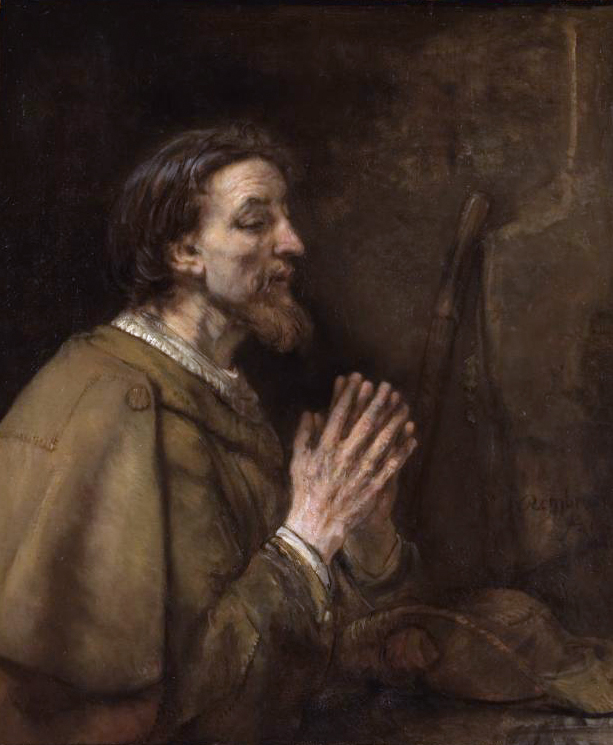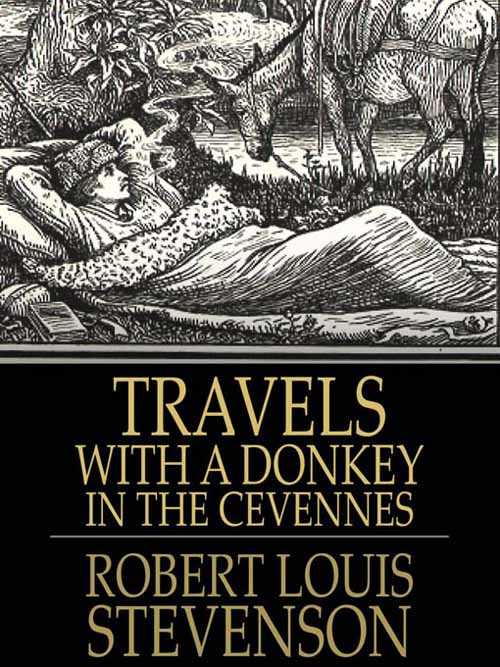
St. James the Greater, dressed and accoutred as the quintessential Pilgrim…
* * * *
 At the end of “Starting back with a bang,” we were talking about how the mother of Constantine the Great found the “True Cross.” (Shown at left, he was the Roman emperor who became the first “great patron of the Church.”) We were also talking about the value of such pilgrimages in general:
At the end of “Starting back with a bang,” we were talking about how the mother of Constantine the Great found the “True Cross.” (Shown at left, he was the Roman emperor who became the first “great patron of the Church.”) We were also talking about the value of such pilgrimages in general:
According to legends that spread widely, the True Cross was discovered in 326 by Saint Helena, the mother of the Roman Emperor Constantine the Great,* during a pilgrimage she made to Jerusalem.
And speaking of pilgrimages: Of course the two I went on this summer weren’t close to being like going to Jerusalem. (See “Back in the saddle again,” again.”) But for next summer – more precisely, September 2017 – my brother and I plan to hike the Camino de Santiago…
(…mostly in Spain.* In fact, on both the Chilkoot Trail and on the Yukon River, one or both of us brothers would think ahead to “sunny Spain.” That is, on the usual sunless day on the Yukon, we would look ahead to the prospect of hiking, but not over one &^%# pile of rocks after another. And to the prospect of hiking where the sun comes out occasionally…)
The point being that hiking on the Camino de Santiago will be more like a pilgrimage to Jerusalem than one on the Yukon River. For one thing we probably won’t see any “Naked lady,” as on the Yukon. (Friday, August 12, around 4:15 p.m. Not that it stuck in my mind or anything…)
But once again we digress. We were speaking of pilgrimages. More to the point, of why an otherwise-relatively-sane 65-year-old would either hike the Chilkoot Trail or spend 12 days canoeing 440 miles on the Yukon River. That of course brings up St. James the Greater, seen below right and again at the bottom of the page, just above the Notes.
And St. James is the Patron Saint of Pilgrims.
 For example, in the picture at the top of the page, St. James is seen accoutred as a pilgrim, complete with the accessories “needed for a task or journey.” That is, he is shown wearing a pilgrim’s hat and with a walking stick in the background. See Wikipedia:
For example, in the picture at the top of the page, St. James is seen accoutred as a pilgrim, complete with the accessories “needed for a task or journey.” That is, he is shown wearing a pilgrim’s hat and with a walking stick in the background. See Wikipedia:
A pilgrim … is a traveler (literally one who has come from afar) who is on a journey to a holy place. Typically, this is a physical journeying (often on foot) to some place of special significance to the adherent of a particular religious belief system. In the spiritual literature of Christianity, the concept of pilgrim and pilgrimage may refer to the experience of life in the world (…as a period of exile) or to the inner path of the spiritual aspirant from a state of wretchedness to a state of beatitude.
Also on the topic, see Passages of the Soul: Ritual Today, by James Roose-Evans. It noted that a healthy sense of ritual “should pervade a healthy society, and that a big problem now is that we’ve abandoned many rituals that used to help us deal with big change and major trauma.”
The book added that all true ritual “calls for discipline, patience, perseverance, leading to the discovery of the self within.” More to the point, the book said a pilgrimage – like a 12-day canoe trip on the Yukon or “hike” on the Chilkoot &$%# Trail – “may be described as a ritual on the move.” Further, that through “the raw experience of hunger, cold, lack of sleep,” we can quite often find a sense of our fragility as mere human beings. (Especially when compared with the “majesty and permanence” of God’s creation, which of course includes all those &$%# rocks!)
Finally, the book noted that such a pilgrimage can be “one of the most chastening, but also one of the most liberating” of personal experiences.
For my part, I certainly felt “chastened” after we got back to Skagway from the Chilkoot Trail.(Although the 10-of-12 beers that my nephew and I shared – of the two six-packs I bought – helped a lot too.) And I had a blister-on-a-blister that got infected – that didn’t fully heal until three weeks after the hike – to further heighten the feeling of getting “chastened.”
So you could say this past summer I was “discovering the self within.” (There was more than enough hunger, cold, and lack of sleep.) But as I said in I pity the fool, “I pity the fool who doesn’t do pilgrimages and otherwise push the envelope, even at the advance stage of his life.” (Loosely translating Ralph Waldo Emerson‘s, “Whoso would be a man, must be a nonconformist.”)
Then there’s John Steinbeck. He began Part Two of Travels with Charley: In search of America by noting many men his age who – told to slow down – “pack their lives in cotton wool, smother their impulses, hood their passions, and gradually retire from their manhood.” (They “trade their violence for a small increase in life span.”) But that wasn’t his way:
I did not want to surrender fierceness for a small gain in yardage… If this projected journey should prove too much then it was time to go anyway. I see too many men delay their exits with a sickly, slow reluctance to leave the stage. It’s bad theater as well as bad living.
So if nothing else, I’m in good company: With people like St. James the Greater, Ralph Waldo Emerson, and John Steinbeck. And that’s not to mention Robert Louis Stevenson, whose own pilgrimages I wrote about in On donkey travel – and sluts…
* * * *

“One of the single greatest works of English literature” – said John Steinbeck
* * * *
The upper image is courtesy of James, son of Zebedee – Wikipedia, with the full caption, “Saint James the Elder by Rembrandt[.] He is depicted clothed as a pilgrim; note the scallop shell on his shoulder and his staff and pilgrim’s hat beside him.”
Re: Constantine the Great. Wikipedia said he was a “significant figure in the history of Christianity,” the first Roman emperor to “stop Christian persecutions and to legalise Christianity along with all other religions and cults in the Roman Empire.” See also Constantine the Great and Christianity – Wikipedia: “Constantine’s decision to cease the persecution of Christians in the Roman Empire was a turning point for Early Christianity, sometimes referred to as the Triumph of the Church, the Peace of the Church or the Constantinian shift. In 313, Constantine and Licinius issued the Edict of Milan decriminalizing Christian worship. The emperor became a great patron of the Church.”
The caption for the image of Constantine – immediately below the painting of St. James – reads as follows: “‘Constantius appoints Constantine as his successor’ by Peter Paul Rubens, 1622.”
Re: “Mostly in Spain.” As noted in Camino de Santiago (route descriptions), there are a number of routes – both inside and outside of Spain – by which such pilgrims may “walk for weeks or months to visit the city of Santiago de Compostela.” (In northwestern Spain.) And the “Original Way or Camino Primitivo,” begins in Oviedo,” in northeastern Spain.
Further, while my brother hopes to hike the 500-plus miles of the popular “French Way” including going over the Pyrenees Mountains – I’m figuring on a more-manageable 14 days, or around 200 miles. (The French Way runs “from Saint-Jean-Pied-de-Port on the French side of the Pyrenees to Roncesvalles on the Spanish side before making its way through to Santiago de Compostela through the major cities of Pamplona, Logroño, Burgos and León.”)
 On that note, the “Central Pyrenees” – at left – look way too much like the Chilkoot &^%$ Trail…
On that note, the “Central Pyrenees” – at left – look way too much like the Chilkoot &^%$ Trail…
Re: Passages of the Soul: Ritual Today, by Roose-Evans. The quoted portions are from the “Element Books” edition (1994), at pages 23-25. On that note see also The Social Importance of Rites of Passage and Initiations. The study said that “all people have a psychic need to have the support of ritual at transitions in their lives.” On the other hand, one authority asserted that “Western societies do not have initiation at puberty, instead of ritual, we have disturbed teenagers and infantile adults.”
The lower image is courtesy of Robert Louis Stevenson Trail – Walking in France.